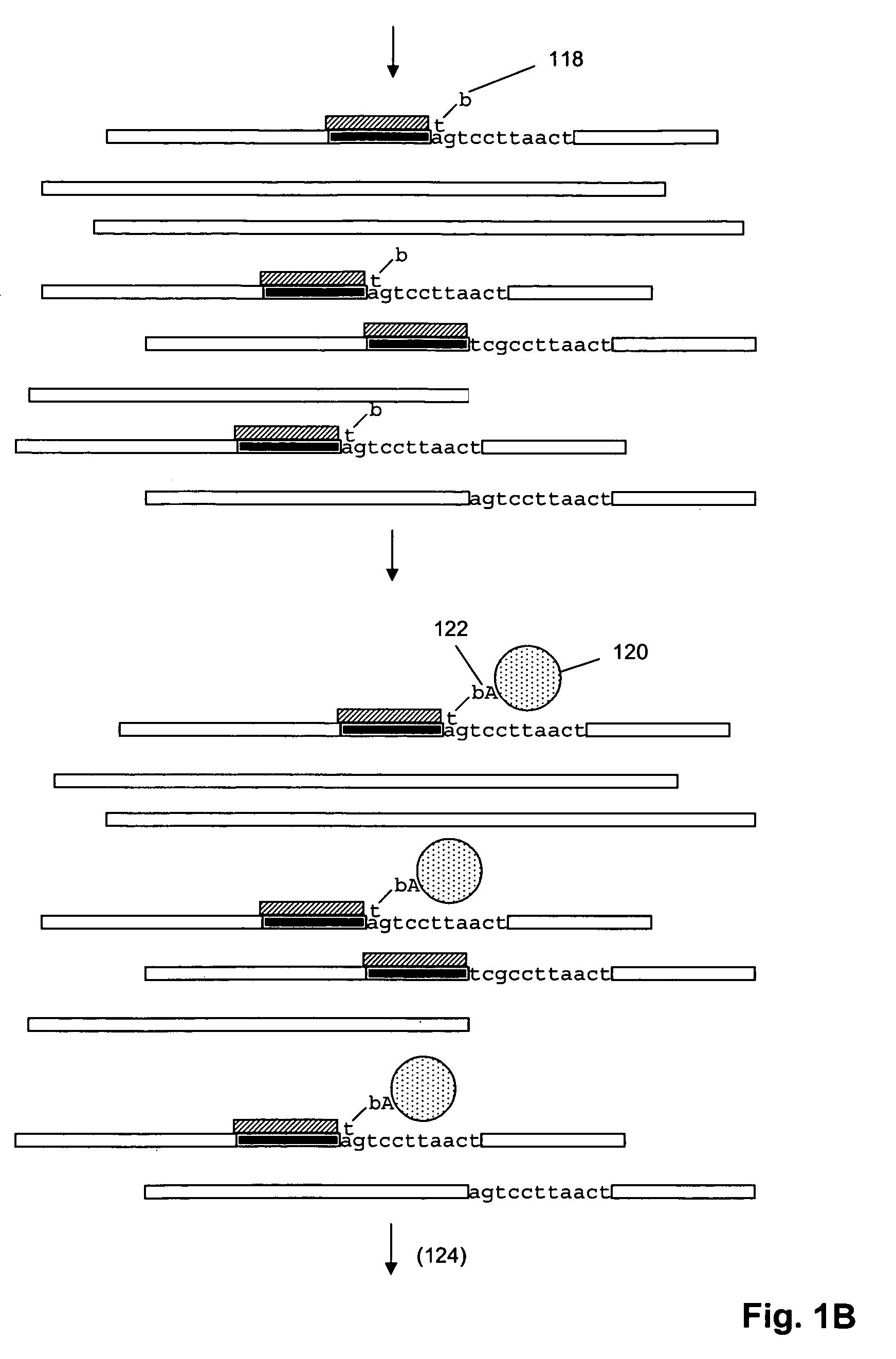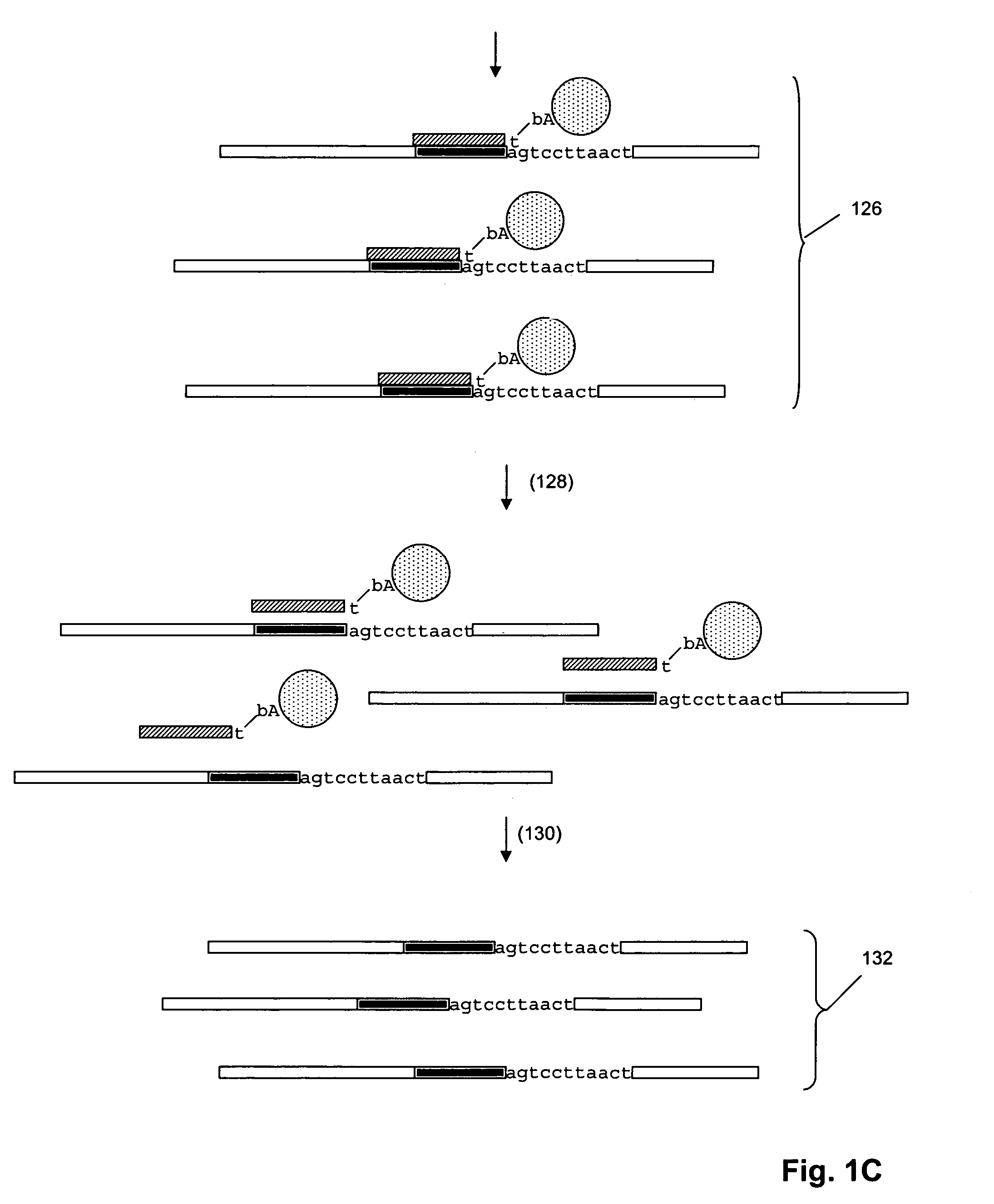Genetic analysis by sequence-specific sorting
a sequence-specific sorting and gene analysis technology, applied in the field of methods and compositions for analyzing complex populations of polynucleotides, can solve the problems of reduced sensitivity, difficult implementation, and no throughput or flexibility for the types of studies required
- Summary
- Abstract
- Description
- Claims
- Application Information
AI Technical Summary
Benefits of technology
Problems solved by technology
Method used
Image
Examples
Embodiment Construction
[0036]The invention provides methods for sorting polynucleotides based on predetermined sequence characteristics to form subpopulations of reduced complexity. In one aspect, such sorting methods are used to analyze populations of uniquely tagged polynucleotides, such as genome fragments. During or at the conclusion of repeated steps of sorting in accordance with the invention, the tags may be replicated, labeled and hybridized to a solid phase support, such as a microarray, to provide a simultaneous readout of sequence information from the polynucleotides. As described more fully below, predetermined sequence characteristics include, but are not limited to, a unique sequence region at a particular locus, a series of single nucleotide polymorphisms (SNPs) at a series of loci, or the like. In one aspect, such sorting of uniquely tagged polynucleotides allows massively parallel operations, such as simultaneously sequencing, genotyping, or haplotyping many thousands of genomic DNA fragm...
PUM
| Property | Measurement | Unit |
|---|---|---|
| pH | aaaaa | aaaaa |
| melting temperature | aaaaa | aaaaa |
| diameter | aaaaa | aaaaa |
Abstract
Description
Claims
Application Information
 Login to View More
Login to View More - R&D
- Intellectual Property
- Life Sciences
- Materials
- Tech Scout
- Unparalleled Data Quality
- Higher Quality Content
- 60% Fewer Hallucinations
Browse by: Latest US Patents, China's latest patents, Technical Efficacy Thesaurus, Application Domain, Technology Topic, Popular Technical Reports.
© 2025 PatSnap. All rights reserved.Legal|Privacy policy|Modern Slavery Act Transparency Statement|Sitemap|About US| Contact US: help@patsnap.com



